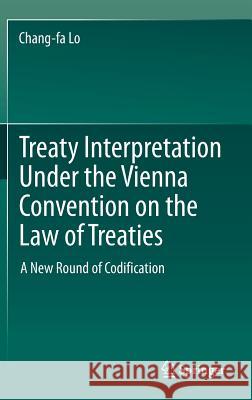Treaty Interpretation Under the Vienna Convention on the Law of Treaties: A New Round of Codification » książka
topmenu
Treaty Interpretation Under the Vienna Convention on the Law of Treaties: A New Round of Codification
ISBN-13: 9789811068652 / Angielski / Twarda / 2017 / 361 str.
Kategorie:
Kategorie BISAC:
Wydawca:
Springer
Język:
Angielski
ISBN-13:
9789811068652
Rok wydania:
2017
Wydanie:
2017
Ilość stron:
361
Waga:
0.71 kg
Wymiary:
23.39 x 15.6 x 2.24
Oprawa:
Twarda
Wolumenów:
01
Dodatkowe informacje:
Wydanie ilustrowane











